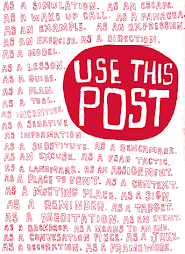what a great, packed, article...
one of the 10:
Trash Windows and Go “Open Source”
The thinker: Jim Hirsch, associate superintendent for technology for the 53,300-student Plano, Texas, school district
The idea: Uttering the words “wide open” and “public school” in the same sentence tends to make administrators shudder. But creating a virtual world with no barriers is the idea behind the open-technology movement. Open technology includes the use of open-source operating systems, applications, and content; open standards for interoperability; and open hardware.
The thinker: Jim Hirsch, associate superintendent for technology for the 53,300-student Plano, Texas, school district
The idea: Uttering the words “wide open” and “public school” in the same sentence tends to make administrators shudder. But creating a virtual world with no barriers is the idea behind the open-technology movement. Open technology includes the use of open-source operating systems, applications, and content; open standards for interoperability; and open hardware.
Developed collaboratively and offered at little or no cost, open-source technology can be a powerful new element in district programs that have long relied on proprietary and sometimes costly software. Including applications like the browser Firefox and operating systems like Linux, open-source technologies are free, continually updated, and—say many—the wave of the future for school information systems. “It’s easy to pooh-pooh open source,” Hirsch says, “when in reality Amazon and Google are built on open technologies. The rest of the world gets open technology, and we’ve got to catch up.”
Open applications can be freely modified by the district or school. Open-source versions exist for nearly every major administrative and instructional system out there. And some of them are just as bulletproof—if not more so—than their commercial equivalents, say proponents. “People are attracted to open-source technology not just because it’s cheaper but because it often has more features, is updated more regularly, and can be copied and sent home,” says Hirsch. “You can’t hand kids or parents a copy of Photoshop, but you can hand them a copy of Gimp [an open-source alternative].” What’s more, by using a variety of programs, schools can offer more to their students for less.
Plano has placed 3,500 refurbished computers in the homes of its low-income students. Licensing Microsoft Office is not an option, but kids can do what they need to with Open Office. “We’re only going to use the proprietary software that makes the most sense,” Hirsch explains.
Very rarely does a district switch overnight from proprietary to open technology, and in most cases the goal is to have a compatible mix of both types of systems in place. In some districts, the open-source effort begins with applications that teachers or administrators want to use or just start using on their own. Lesson-planning software like Moodle or assignment-sharing programs like QUIA are examples. In other cases, district leaders learn about and make the shift from the central office with little apparent difference to teachers and students.
Hirsch says the biggest challenge is getting school administrators to rethink the purchasing paradigm. “There’s a lack of awareness about the amount of open technology available,” Hirsch notes, “and people say, ‘Why change? What we have is working.’”
For more information:
k-12.pisd.edu/open
my.cosn.org
For more information:
k-12.pisd.edu/open
my.cosn.org
another is via James Paul Gee... :)
_____________________________________________________________________




































